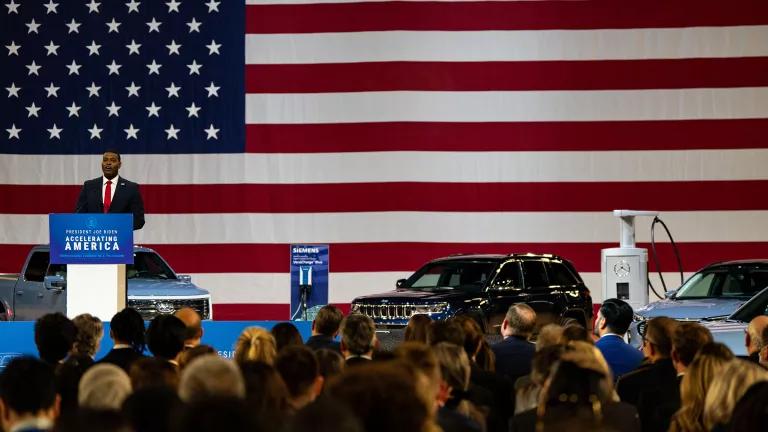The Washington Post has a fascinating four-part series examining the role of Vice President Cheney in the Bush administration. The final article, Leaving No Tracks, explores several high-profile environmental controversies during this administration in which the Vice President personally intervened.
One of the administration attacks on environmental protections that the Post article discusses is a Clean Air Act loophole promoted by the Vice President to weaken longstanding air quality safeguards against industrial sources of air pollution, like power plants and oil refineries. NRDC was one of several environmental groups that, along with a dozen or so state attorneys general, succeeded in having a court first block this loophole from taking effect in 2003, and then overturning the rule in 2006. I was one of several attorneys representing the environmental group challengers. The article confirms what we suspected at the time, that EPA Administrator Whitman had resigned to avoid signing Cheney’s final rule.
We did know that the Bush political appointee heading EPA's enforcement office, J.P. Suarez, had this to say about the administration’s pro-industry "reform" of the "New Source Review" air quality protections, in an interview shortly after he too had resigned: "The goal of NSR reform was to prevent any enforcement case from going forward. Some people thought the [NSR enforcement initiative against power plants and oil refineries] should never have been brought. The reform was really designed to thwart our ability to do it." And this: "because we were so inflamed and overheated about the reform, we ended up with a reform package that doesn't pass the laugh test." Suarez pointed to the White House for these views.
To gain some real world appreciation for how destructive the EPA air pollution loophole would have been had we not blocked it in court, consider this. EPA did not contest evidence we presented to the court that the loophole would have allowed smog-forming pollution increases of over 21,000 tons per year from a single power plant used as an example. To provide a basis for comparison, 21,000 tons is nearly one-and-a-half times the total amount of this pollution emitted annually by all businesses and vehicles located in the District of Columbia. And the EPA loophole was made available to some 20,000 industrial polluters nationwide, allowing untold pollution increases.
After the court overturned the EPA rule, I received exuberant, congratulatory calls from attorneys thrilled about the fate of the profoundly illegal, harmful, and politicized loophole. And where were these attorneys calling from? EPA.
One of the revelations in the Post article is Whitman's account of a meeting with the President, in which she plops down a folder containing 10-12 inches of news clips strongly criticizing the administration's air pollution loophole -- even before it had been adopted. Whitman's hope, futile as we know now, was to dissuade the President from directing EPA to finalize the dirty rule.
What makes this previously undisclosed account especially significant to me is that the hail of negative media coverage that Whitman presented to the President was prompted in large part by leaked copies of EPA's draft rulemaking proposal and draft final rule that NRDC had obtained and provided to reporters. The Fourth Estate played the invaluable democratic role of alerting the American people to the administration's destructive plans. But it was ultimately the third branch of government, the judiciary, that public interest attorneys and state attorneys general needed to appeal to in order to block the administration's lawbreaking.
Finally, the Post article brings to mind a report issued before the current administration took office, in the summer of 2000, by a shadowy body in Washington called the National Petroleum Council. The oil industry report targeted the New Source Review law for "reform" and condemned the EPA New Source Review enforcement lawsuits against oil refiners. And who sat on the Petroleum Council’s Committee on Refining that produced this report? Then-President and CEO of the Halliburton Company -- Richard B. Cheney.




